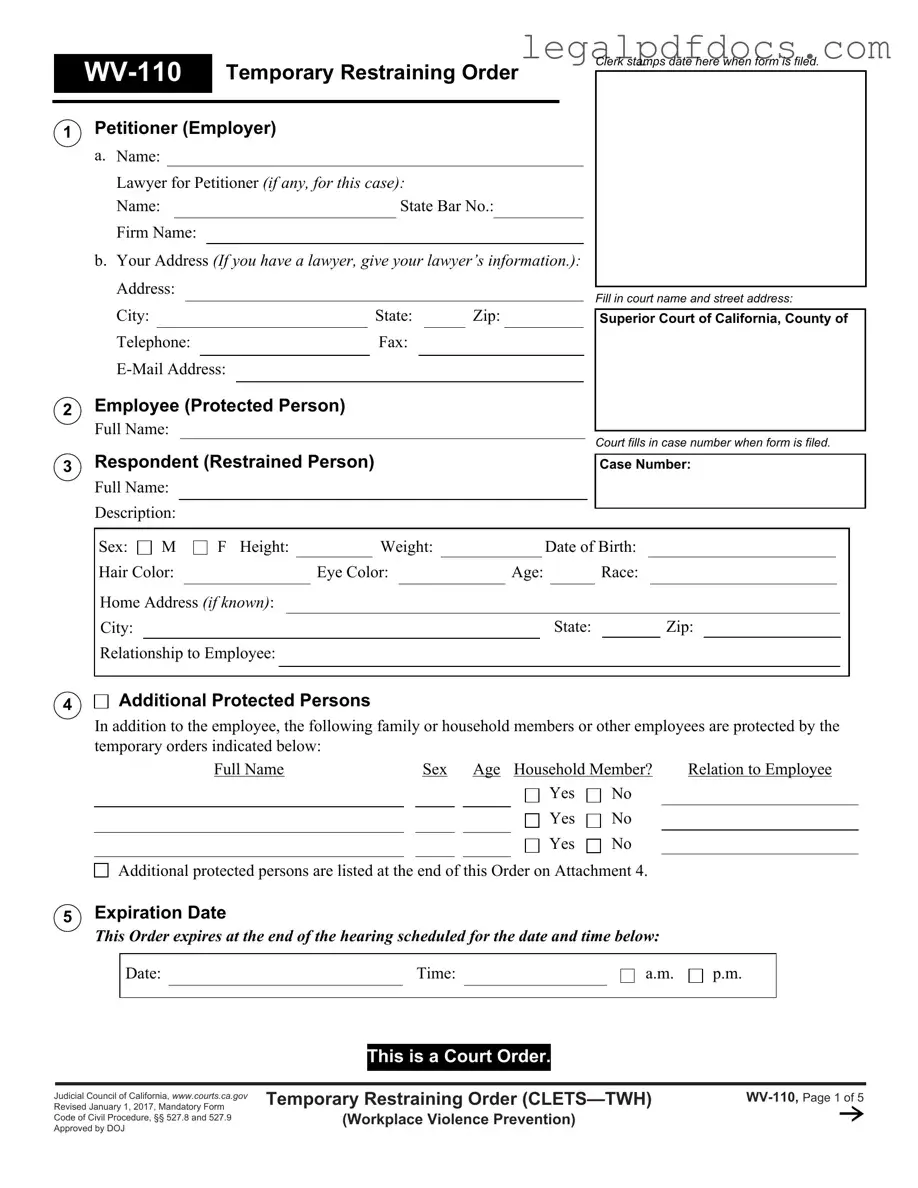The Fake Restraining Order form, specifically the WV-110 Temporary Restraining Order, serves as a critical document in addressing workplace violence and ensuring the safety of employees. This form is designed for use by employers who seek to protect their staff from potential threats posed by individuals, known as respondents, who may cause harm. It includes essential details such as the names and contact information of both the petitioner (the employer) and the respondent, as well as the specifics of the protective orders being requested. The form outlines personal conduct orders that prohibit the respondent from engaging in harmful behaviors, such as harassment or stalking, and includes a stay-away order that mandates a specified distance be maintained between the respondent and the protected person. Furthermore, the form details restrictions on firearm possession for the respondent, emphasizing the seriousness of the situation. It also includes provisions for additional protected individuals, ensuring broader safety measures for family members or other employees. The order is time-sensitive, with an expiration date set for the end of the scheduled hearing, reinforcing the urgency of the matter. With clear instructions for both the petitioner and the respondent, this form plays a pivotal role in maintaining a safe work environment and addressing incidents of workplace violence effectively.
